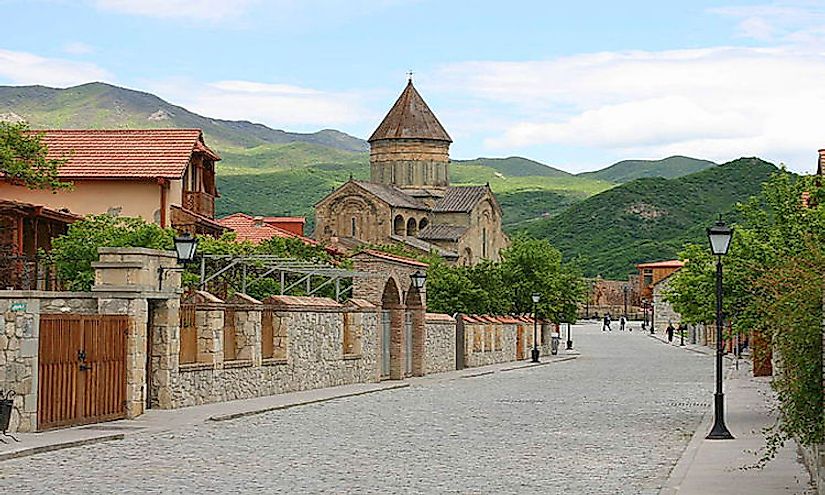UNESCO World Heritage Sites In Georgia

Georgia is a unitary semi-presidential Eurasian country with a population of 3.75 million people. The architecture of the country has been influenced by different architectural styles with some from the medieval period. The country is home to three UNESCO World Heritage Sites. They are namely; Bagrati Cathedral and Gelati Monastery, Mtskheta Historical Monuments, and Upper Svaneti Caucasus mountains, villages, and tower houses. In this article, we will discuss the sites mentioned above.
UNESCO World Heritage Sites In Georgia
Bagrati Cathedral And Gelati Monastery
The Bagrati Cathedral was built in the 11th century during the reign o King Bagrat III. In 1691, the Turks hit and destroyed a huge part of the cathedral, but the ruins are still intact today in the middle of Kumasi. The Gelati Monastery was on the other hand built between the 12th and the 17th centuries. It is a well-preserved complex characterized by beautifully done mosaics and wall paintings. The Gelati Monastery was an educational hub which attracted the top scientists, philosophers, and scholars of the time. Restoration of the cathedral started in the early 1950's. In 1954, the two sites were jointly inscribed in the UNESCO World Heritage Sites as cultural sites. The sites also served as a burial site for some of the most influential people which include; David IV, Solomon II of Imereti, Alexander II, and Bagrat.
Mtskheta Historical Monuments
Mtskheta is one of the oldest cities in the country having been established in the 5th century BC. It started as a site for the early Christian activity and later became the capital of the kingdom of Iberia. In the 6th century AD, the then king of Iberia shifted his capital to Tisibilisi for strategic reasons. Mtskheta became a royal burial site where most kings of Georgia were coroneted and buried. The city is regarded as the most religious in the country as it is where Christianity started, served as a shrine for pagans and is still the headquarters of the Orthodox Christianity in Georgia. In the 11th century, King Ilia II of Georgia gave the city the status of a “Holy City.” Some notable sites include; the Jvari Monastery, the fortress of Bebris Tsikhe, Samtavro monastery, and the garden of Mikheil Mamulashvil.
Upper Svaneti Caucasus Mountains, Villages, And Tower-Houses
The upper Svaneti is the highest inhabited are in the Caucasus Mountains at an elevation of between 10,000ft and 15,000 feet above the sea level. The site was inscribed on the UNESCO World Heritage Sites list because of the ancient villages and Svanetian towers which were built in the 9th century AD. The tower houses were used for living as well as defensive purposes. The Chanzhashi village currently has over 200 such towers. These towers had around five floors on average and had a tapering slender shape.
Protection Of These UNESCO World Heritage Sites In Georgia
In 2010, UNESCO declared the Cathedral and Gelati Monastery as endangered sites due to active reconstruction on the sites. The reconstruction was aimed at restoring the site to its original state.According to UNESCO the Mtskheta Historical monumentsfaces a severe deterioration of stonework which is the greatest threat to the monument. In 1971,the Upper Svaneti Caucasus Mountains, villages, and tower-houses. was brought under the control of National Agency for Cultural Heritage. The adverse weather condition is the leading threat to the site.
UNESCO World Heritage Sites In Georgia
| UNESCO World Heritage Sites in Georgia | Year of Inscription; Type |
| Bagrati Cathedral and Gelati Monastery | 1994; Cultural Site in Danger |
| Mtskheta Historical Monuments | 1994; Cultural |
| Upper Svaneti Caucasus Mountains, Villages, and Tower-Houses | 1996; Cultural |











